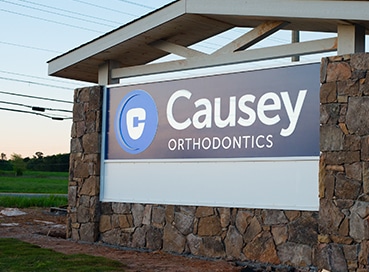4 Simple Techniques For Orthodontics
4 Simple Techniques For Orthodontics
Blog Article
The Best Guide To Orthodontics
Table of ContentsNot known Details About Orthodontics The Main Principles Of Orthodontics What Does Orthodontics Do?The Greatest Guide To OrthodonticsOrthodontics - QuestionsThe Definitive Guide for OrthodonticsOrthodontics Can Be Fun For Anyone
You might really feel some pain for a while when your dental braces are initially placed on and when they are adjusted. It will take a little time to get used to your dental braces and they can bother your lips and cheeks - Orthodontics. If this takes place, an alleviation wax can be put on your dental bracesIt is very important to clean your braces along with the front, back and eating surface areas of the teeth. Your dentist or orthodontist will provide you pointers on how to brush and on just how to floss making use of floss threaders. After flossing, roll it up in a tiny round and put it in the waste.
Parents ought to oversee their kids to make certain they do a good work cleansing their teeth and braces and comply with the suggestions of their dentist or orthodontist. If you have braces, do not attack on difficult things such as ice dices and nuts. Do not chew completions of pens or pencils.
The smart Trick of Orthodontics That Nobody is Talking About
Issues that are not taken care of can cause the treatment to last longer. The traditional metal dental braces, there are tooth-coloured ceramic dental braces that are less visible. Dental braces and elastics can additionally be multicoloured.
It overviews the direction of tooth movement and jaw development in a person that is still expanding. There are different kinds of headgear and they may be used throughout any type of part of the orthodontic therapy. Your orthodontist or dental practitioner will certainly reveal you how to put on the headgear and tell you for how long to wear it every day.
What Does Orthodontics Mean?
They may require to be worn at all times or part of the time. Tooth elimination might be required if your teeth are crowded or if a tooth is terribly out of position. Jaw surgical procedure (or orthognathic surgical treatment) might be required when there are major differences in the size or placement of the top and reduced jaws.
An orthodontist is a dental professional educated to diagnose, stop, and deal with teeth and jaw irregularities. Orthodontists function with people of all ages, from youngsters to grownups.
The Buzz on Orthodontics
All orthodontists are dentists, but not all dental experts are orthodontists. Orthodontic residency programs offer intensive, concentrated direction for oral professionals. They concentrate on 2 locations: Just how to correctly and safely move teeth How to effectively lead growth in the teeth, jaw, and faceOnce an orthodontist has completed training, they have the choice to come to be board accredited.
Indicators on Orthodontics You Should Know
If you have just small malocclusion, you might have the ability to make use of clear dental braces, called aligners, rather than traditional braces. Some people need a headwear to assist move teeth right into line with pressure from outside the mouth. After braces or aligners, you'll require to wear a retainer. A retainer is a customized tool that keeps your teeth in place.
They're frequently utilized on children. They can create added space in the mouth without needing to pull teeth. If you have a severe underbite or overbite, you may require orthognathic surgical procedure (likewise called orthodontic surgical procedure) to extend or shorten your jaw. Orthodontists utilize cables, medical screws, or plates to i thought about this support your jaw bone.
Not known Facts About Orthodontics

Orthodontists may do surgical treatment, exams,X-rays,and even more to aid you achieve a much more comfortable, much healthier smile. An orthodontist is concentrated on your bite, so something like a cracked tooth would certainly be dealt with by a dental practitioner. Orthodontists are dental professionals yet not all dentists are orthodontists. Orthodontists are concentrated on your bite, or the method your teeth meshed, and the straightness of your teeth.
One of the indications of a lovely smile is a healthy and balanced set of teeth this post and good dental wellness. A lot of individuals have gapped, misaligned, irregular teeth that can make them incomplete.
Orthodontics Fundamentals Explained
Dealing with orthodontic concerns beforehand can also protect against complications like jaw discomfort and gum tissue condition, making certain long-term dental well-being. Orthodontic treatment is known for its ability to change smiles, yet its advantages extend beyond mere appearances (Orthodontics). From fostering better oral health and wellness to increasing self-confidence, can profoundly influence individuals' lives. A few of these advantages are: Among the significant orthodontic appliances is that it starts a transformative procedure past tooth alignment.

These adjustments are essential for preserving progression and ensuring the therapy remains on track according to the recognized plan. The orthodontist creates an individualized procedure strategy based upon the diagnostic documents and the person's distinct needs and choices. This plan details the recommended activity to resolve the determined orthodontic problems and accomplish the preferred result.
Report this page